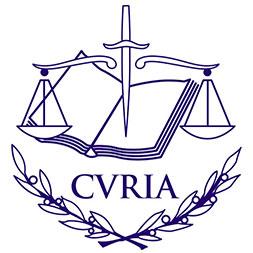Overview
- Role: Ensuring EU law is interpreted and applied the same in every EU country; ensuring countries and EU institutions abide by EU law.
- Members:
- Court of Justice: 1 judge from each EU country, plus 11 advocates general
- General Court: 2 judges from each EU country
- Established in: 1952
- Location: Luxembourg
- Website: Court of Justice of the European Union (CJEU)
The Court of Justice of the European Union (CJEU) interprets EU law to make sure it is applied in the same way in all EU countries, and settles legal disputes between national governments and EU institutions.
It can also, in certain circumstances, be used by individuals, companies or organisations to take action against an EU institution, if they feel it has somehow infringed their rights.
What does the CJEU do?
The CJEU gives rulings on cases brought before it. The most common types of case are:
- interpreting the law (preliminary rulings) – national courts of EU countries are required to ensure EU law is properly applied, but courts in different countries might interpret it differently. If a national court is in doubt about the interpretation or validity of an EU law, it can ask the Court for clarification. The same mechanism can be used to determine whether a national law or practice is compatible with EU law.
- enforcing the law (infringement proceedings) – this type of case is taken against a national government for failing to comply with EU law. Can be started by the European Commission or another EU country. If the country is found to be at fault, it must put things right at once, or risk a second case being brought, which may result in a fine.
- annulling EU legal acts (actions for annulment) – if an EU act is believed to violate EU treaties or fundamental rights, the Court can be asked to annul it – by an EU government, the Council of the EU, the European Commission or (in some cases) the European Parliament.
Private individuals can also ask the Court to annul an EU act that directly concerns them. - ensuring the EU takes action (actions for failure to act) – the Parliament, Council and Commission must make certain decisions under certain circumstances. If they don't, EU governments, other EU institutions or (under certain conditions) individuals or companies can complain to the Court.
- sanctioning EU institutions (actions for damages) – any person or company who has had their interests harmed as a result of the action or inaction of the EU or its staff can take action against them through the Court.
Composition
The CJEU is divided into 2 courts:
- Court of Justice – deals with requests for preliminary rulings from national courts, certain actions for annulment and appeals.
- General Court – rules on actions for annulment brought by individuals, companies and, in some cases, EU governments. In practice, this means that this court deals mainly with competition law, State aid, trade, agriculture, trade marks.
Each judge and advocate general is appointed for a renewable 6-year term, jointly by national governments. In each Court, the judges select a President who serves a renewable term of 3 years.
How does the CJEU work?
In the Court of Justice, each case is assigned 1 judge (the "judge-rapporteur") and 1 advocate general. Cases are processed in 2 stages:
- Written stage
- The parties give written statements to the Court - and observations can also be submitted by national authorities, EU institutions and sometimes private individuals.
- All of this is summarised by the judge-rapporteur and then discussed at the Court's general meeting, which decides:
- How many judges will deal with the case: 3, 5 or 15 judges (the whole Court), depending on the importance and complexity of the case. Most cases are dealt with by 5 judges, and it is very rare for the whole Court to hear the case.
- Whether a hearing (oral stage) needs to be held and whether an official opinion from the advocate general is necessary.
- Oral stage – a public hearing
- Lawyers from both sides can put their case to the judges and advocate general, who can question them.
- If the Court has decided an Opinion of the advocate general is necessary, this is given some weeks after the hearing.
- The judges then deliberate and give their verdict.
- General Court procedure is similar, except that most cases are heard by 3 judges and there are no advocates general.
The CJEU and you
If you – as a private individual or as a company – have suffered damage as a result of action or inaction by an EU institution or its staff, you can take action against them in the Court, in one of 2 ways:
- indirectly through national courts (which may decide to refer the case to the Court of Justice)
- directly before the General Court – if a decision by an EU institution has affected you directly and individually.
If you feel that the authorities in any country have infringed EU law, you must follow the official complaints procedure.
Access to documents
CJEU case-law judicial calendar
Further information
Contact
Court of Justice of the European Union (CJEU)
- Name
- Court of Justice of the European Union (CJEU)
- Website
- https://curia.europa.eu/jcms/jcms/j_6/
- Phone number
- +352 4303 1
- Fax number
- +352 4303 2600
- Postal address
Palais de la Cour de Justice Boulevard Konrad Adenauer
2925 Luxembourg
Luxembourg- Social media

